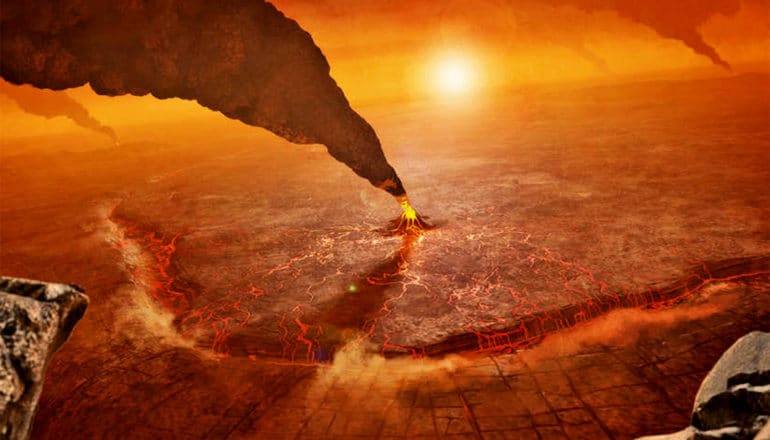
While much about Venus remains a mystery, a recently announced mission will search for active volcanoes and tectonic plate movements on Earth’s closest planetary neighbor.
Toward the end of this decade, a NASA spacecraft orbiting Venus is slated to begin sending radar signals through the planet’s thick, yellowish shroud of corrosive sulfuric acid clouds to measure the rise and fall of the planet’s hellish surface, centimeter by centimeter.
Venus is often called Earth’s sister planet or twin because the two worlds are of similar size and density. Yet the second rock from the sun is hot and inhospitable in the extreme.
“That’s one of the reasons we know so little about the surface,” says Howard Zebker, professor at Stanford University. “If you send a spacecraft to the surface of Venus, which has been done several times, they only last a few minutes until the hot acid burns them up.”
Zebker is a member of the science team for VERITAS, one of three missions to Venus announced in June 2021 by NASA and the European Space Agency. As part of the VERITAS mission—which is expected to launch around 2028-2030—instruments aboard the spacecraft will measure how long it takes radar signals to bounce back from a series of precise locations at different times. This will yield pairs of images that can be combined to reveal changes in altitude at the surface using a technique known as interferometric synthetic aperture radar, or InSAR.
Zebker pioneered algorithms and techniques that will help to guide these measurements and translate them into high-resolution 3D maps of any ongoing deformation of Venus’ outermost layer. On Earth, InSAR has been used to map uplift and subsidence related to groundwater pumping; to detect sinkholes; and to study glacier movements, earthquakes, volcanic eruptions, landslides, and more. But this is the first time the techniques will be used by spacecraft to identify active fault movements beyond our world.
While NASA’s Jet Propulsion Laboratory in Pasadena, California will manage the VERITAS (Venus Emissivity, Radio Science, InSAR, Topography & Spectroscopy) mission, students working in Zebker’s lab at Stanford will help to refine algorithms for the mission over the next several years and work to interpret the data that come in once VERITAS makes it into orbit.
Here, Zebker a professor of geophysics and electrical engineering, discusses his role in the VERITAS mission, how InSAR will help to answer key questions about volcanic activity and tectonic plates on Venus, why our hothouse twin may hold insights relevant to modeling of climate change on our own planet, and paths for interested students to get involved.
The post NASA mission will search for volcanoes on ‘hellish’ Venus appeared first on Futurity.
from Futurity https://ift.tt/3r4XURL
No comments:
Post a Comment